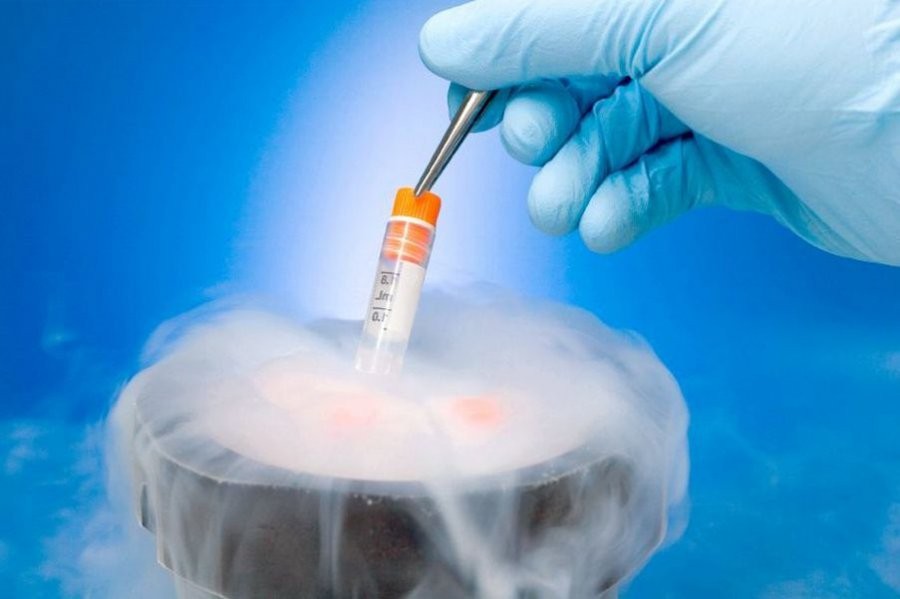
Cryoprotocol or fresh embryo transfer?
IVF programs for surrogate mothers can be performed in a fresh protocol or a frozen embryo transfer is performed. What is the difference? A fresh IVF protocol involves synchronizing the menstrual cycles of the surrogate and the genetic mother, meaning both women begin the procedures at the same time. The genetic mother begins taking hormonal medications that stimulate the maturation of multiple eggs, and the surrogate is prescribed medications to prepare the endometrium for transfer. After the biological mother’s eggs are extracted by puncture, they are immediately fertilized, and the resulting embryos are transferred to the uterus of the surrogate in 3-5 days. Cryopreservation is the transfer of pre-prepared frozen embryos.
Some patients are afraid to freeze embryos and prefer fresh protocols. They often worry about whether the embryos will survive the freezing and whether they will die when unfrozen. Modern reproductive medicine techniques allow embryos to be cryopreserved quickly and safely. Approximately 95% of the total number of embryos received survive – the strongest and healthiest ones.
Cryoprotocols have been used more and more often in surrogacy programs of late. First, there is no necessity to synchronize the menstrual cycles of a genetic mother and a surrogate mother, which implies additional hormonal burden; besides, it is not a quick process. If one of the women fails during the preparation for the transfer, or some external circumstances interfere with the process, or if the doctor misses the implantation window of the surrogate mother, one will either have to go through the process all over again or opt for embryo freezing. A lot of factors have to come together for a successful fresh protocol in a surrogacy program. This is why genetic parents usually do the embryo preparation ahead of time, and the surrogate is transferred vitrified embryos thawed just before the transfer procedure.
Another undeniable advantage of embryo freezing is the possibility of genetic analysis, or preimplantation diagnosis, which helps select verified, genetically healthy embryos for transfer, and greatly reduces the risk of miscarriage or genetic diseases and the future baby.
When is a pregnancy more likely to occur?
Recent statistics tell us that surrogate mothers in cryoprotocols are about 10% more likely to become pregnant on the first try than they are to transfer fresh embryos. That is, in addition to other advantages, the success rate of cryoproplants is much higher.
The only disadvantages of frozen embryo transfer are, perhaps, the additional costs of storing the material in an IVF clinic.